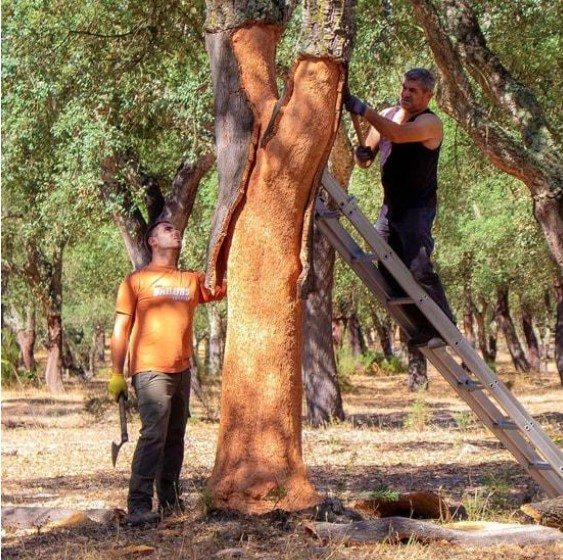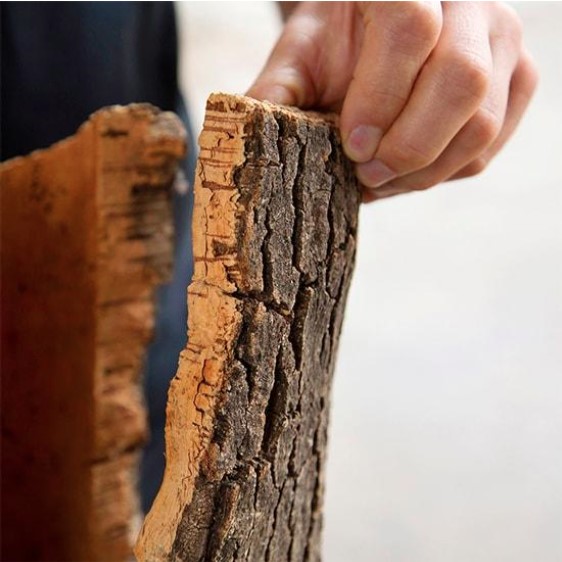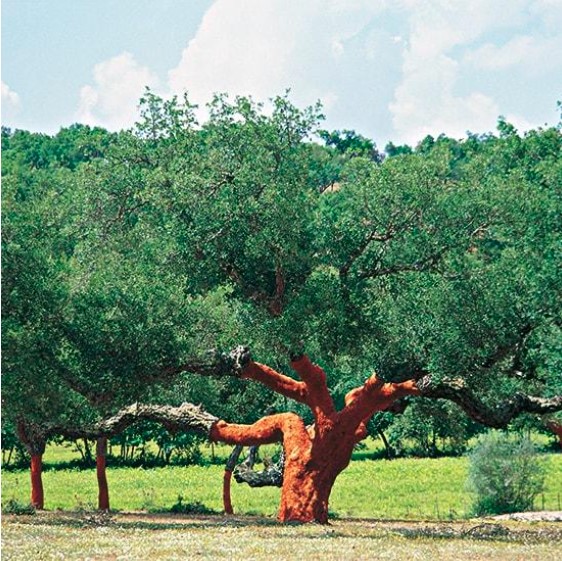
Sustainably sourced.
Cork comes from the bark of the cork oak tree. It’s harvested by hand without ever cutting down a tree or killing it. Cork trees can be harvested every 9-12 years, up to 15 times in their 200+ year lifespan.
Remarkable carbon sink.
Harvesting cork boosts the cork oak’s carbon consumption by up to five times! This is because the tree must absorb more CO2 to grow back its bark.
For each ton of cork harvested, the cork forest absorbs an average of 55 tons of CO2 from the atmosphere. This means that a single cork represents 55 times its weight in carbon sequestered.

Beautiful and versatile.
For thousands of years, people have used cork for its practical applications. Cork is buoyant, lightweight, fire-resistant, thermally and acoustically insulating, antimicrobial, hydrophobic, rot-resistant, and naturally beautiful.
Most people sense that natural wine corks have an inherent value, that they’re too good to end up in the trash. We couldn’t agree more.
What is recycled cork used for?
Recycled cork cannot be used to produce more cork closures.
But, after undergoing a multiple-stage process, including a grinding phase, it can be used as a raw material for many other uses, such as:
- Producing cork granules designed for insulating buildings ;
- Producing floor tiles ;
- Creating cork pin boards ;
- Making shoe soles ;
- Building thermal insulators used in the aviation and aerospace industries ;
- Creating decorative items.
Therefore, recycling cork is simple and environmentally sustainable. To facilitate the recycling of cork closures, the FFL (French Cork Federation) has set up and listed numerous collection points. Once processed, cork closures can enjoy a second lease of life, either as insulation materials or fashion accessories.
